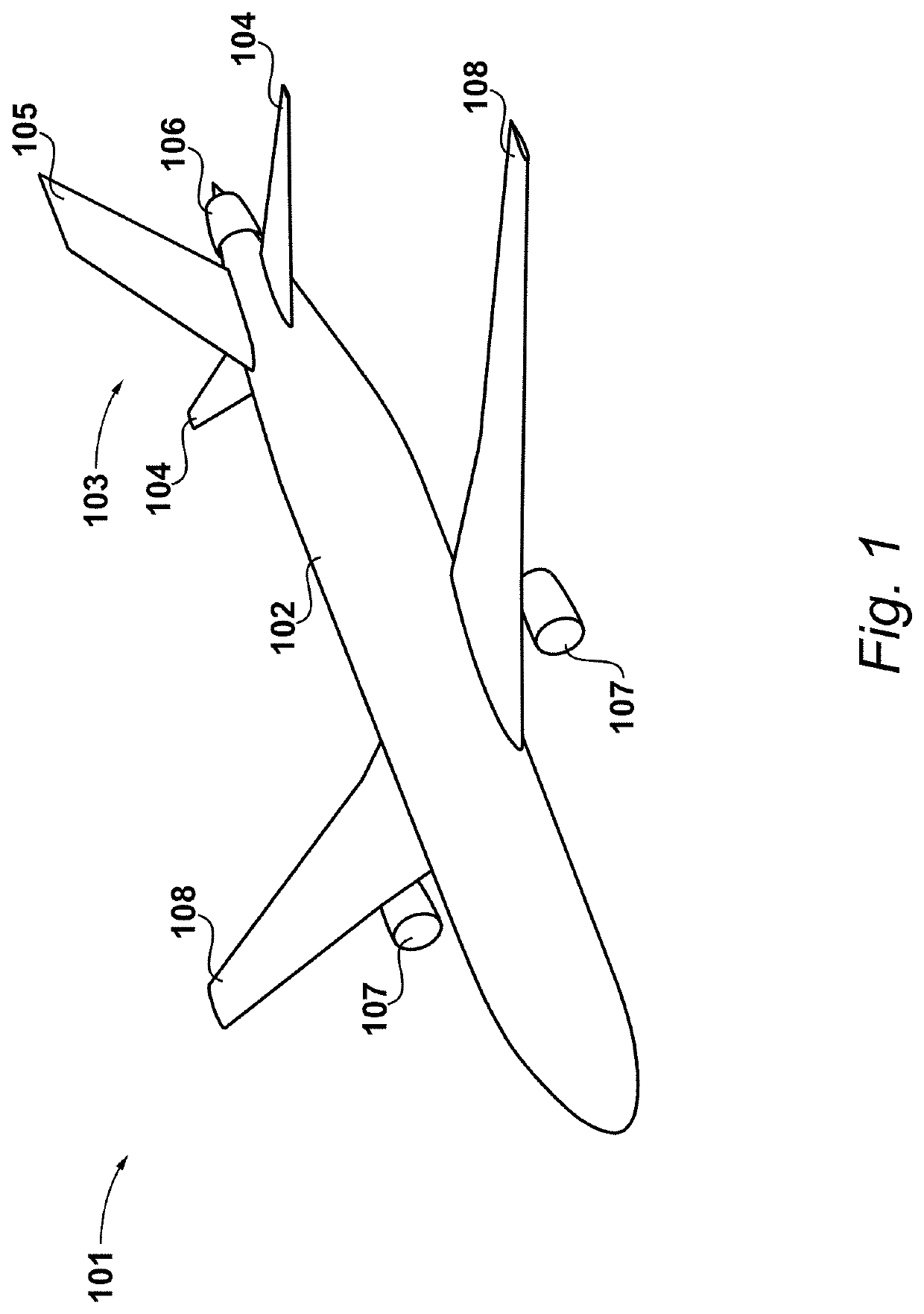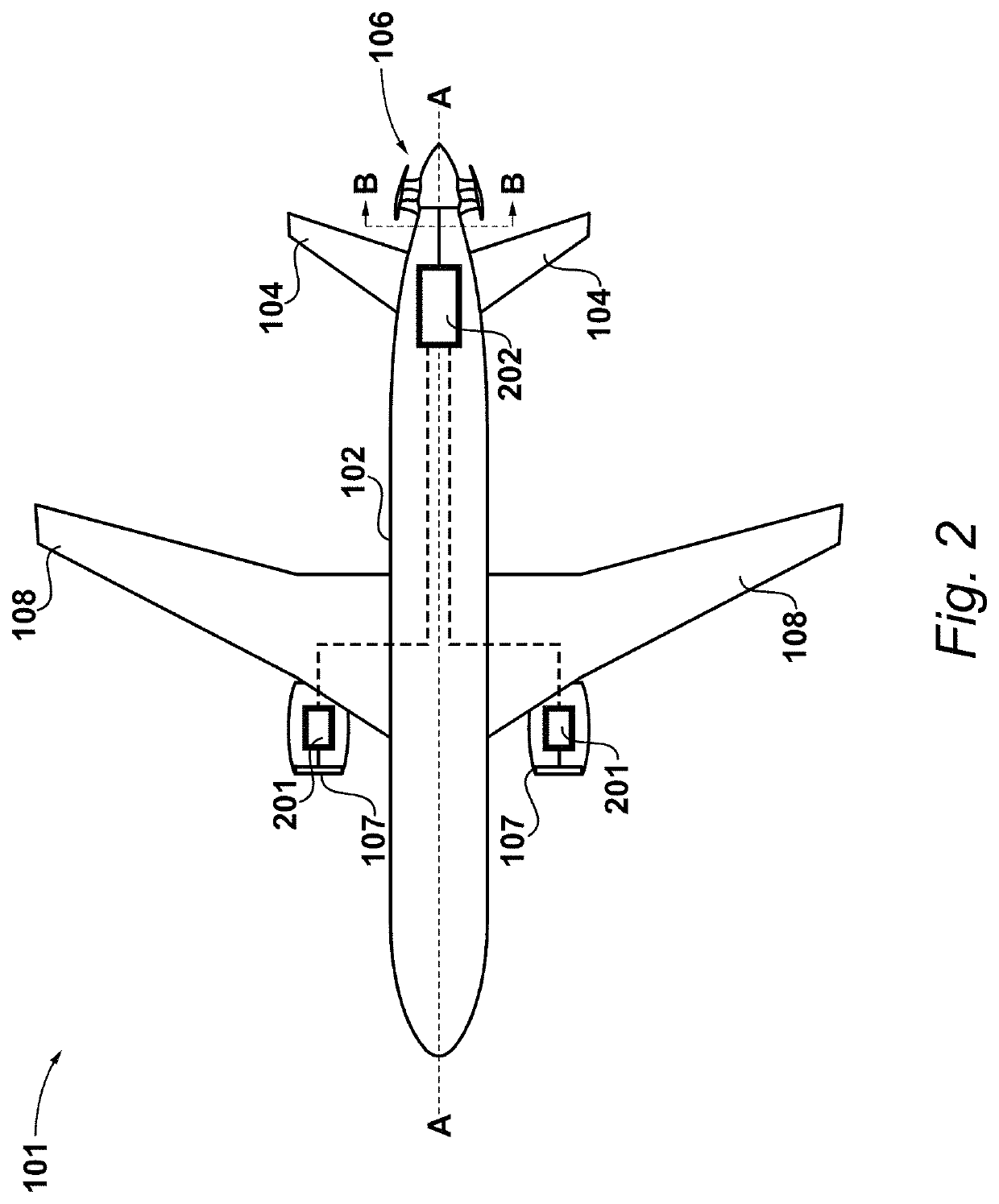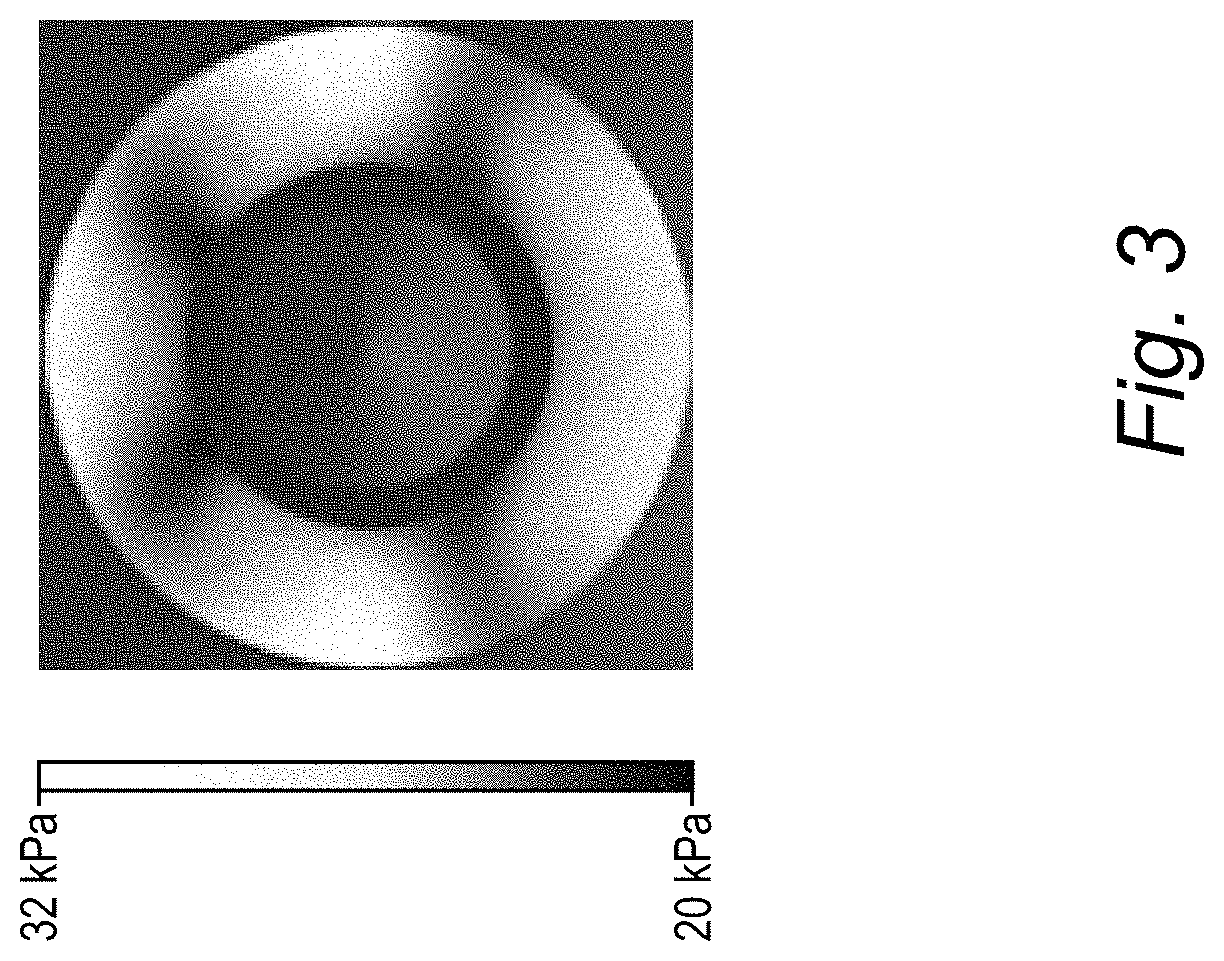Boundary layer ingestion fan system
a technology of ingestion fan and boundary layer, which is applied in the direction of air-flow influencers, machines/engines, transportation and packaging, etc., can solve the problem that little published work to date has investigated the required aerodynamic design of turbomachines
- Summary
- Abstract
- Description
- Claims
- Application Information
AI Technical Summary
Benefits of technology
Problems solved by technology
Method used
Image
Examples
Embodiment Construction
[0045]A tube-and-wing-configuration aircraft 101 according to an embodiment is shown in FIG. 1.
[0046]In the present example, the aircraft 101 comprises a fuselage 102 with a conventional empennage 103 mounted thereto. Thus, both the tailplane 104 and vertical stabiliser 105 are mounted to the fuselage 102. The aircraft 101 further comprises a BLI fan system 106 mounted aft of the fuselage 103 and the empennage 103. In the present example the aircraft 101 is a twinjet and thus comprises two turbofan engines 107 mounted under a respective wing 108. It will be appreciated however that a greater number of engines may be provided depending upon the aircraft configuration. Further, a different engine configuration such as open rotor may be used.
[0047]A schematic of the propulsion system of the aircraft 101 is shown in FIG. 2.
[0048]In the present example, the BLI fan system 106 comprises a fan that is electrically-driven. The turbofan engines 107 therefore each comprise an electric machine...
PUM
 Login to View More
Login to View More Abstract
Description
Claims
Application Information
 Login to View More
Login to View More - R&D
- Intellectual Property
- Life Sciences
- Materials
- Tech Scout
- Unparalleled Data Quality
- Higher Quality Content
- 60% Fewer Hallucinations
Browse by: Latest US Patents, China's latest patents, Technical Efficacy Thesaurus, Application Domain, Technology Topic, Popular Technical Reports.
© 2025 PatSnap. All rights reserved.Legal|Privacy policy|Modern Slavery Act Transparency Statement|Sitemap|About US| Contact US: help@patsnap.com



